There are two distinct categories of heat in the United States. One is the heat found in arid desert environments out west. That often gets referred to as a “dry heat.” The other is a humid heat, which is most often found in the south and on the east coast. Temperatures in these regions don’t necessarily climb as high on the thermometer, but the high humidity can make them feel as bad (or worse). So when you combine high temperatures and high humidity, you get one miserable experience. And that was the case when Mississippi reached its hottest temperature on record. But what was it? Keep reading to discover the hottest temperature ever recorded in Mississippi and learn about some animals that thrive in high heat.
What Was the Hottest Temperature Ever Recorded in Mississippi?
Back on the fateful day of July 29, 1930, residents of Holly Springs, Mississippi, got an unpleasant surprise. They had to swelter through a day that hit a shocking 115 degrees Fahrenheit (48 degrees Celcius)! That may seem like a standard day for desert dwellers. But with the typical Mississippi heat and given that the average high temperature is much lower, it proved to be a brutal experience.
What Is the Average High Temperature in Mississippi?
Even though the deep south is often famous for its hot, humid summers, the thermometer doesn’t actually get that high most days. The average high temperature in Mississippi is only 76.1 degrees Fahrenheit. However, that does not account for the added humidity levels, which can make a warm summer day turn into a brutally hot experience.
What Animals Can Survive High Temperatures?
Surviving in scorching temperatures requires special adaptations. Below we look at ten remarkable animals that have evolved to withstand the blistering hottest temperatures across the globe. These creatures have developed unique physiological and behavioral strategies to thrive in extreme conditions. But given those adaptations and their preferred dry habitats, these animals do not call Mississippi home. We’ll explore some of the wildlife local to Mississippi toward the end of the article.
Dromedary Camel (Camelus dromedarius)
The dromedary camel (or Arabian camel) is an iconic symbol of desert survival. Its ability to tolerate extreme temperatures is remarkable. This camel can withstand the hottest temperatures, as high as 120 degrees Fahrenheit. Its adaptations include features like large feet for walking easily on sand, humps that store fat, and the ability to conserve water. It can also voluntarily close its nostrils, which helps prevent moisture loss.
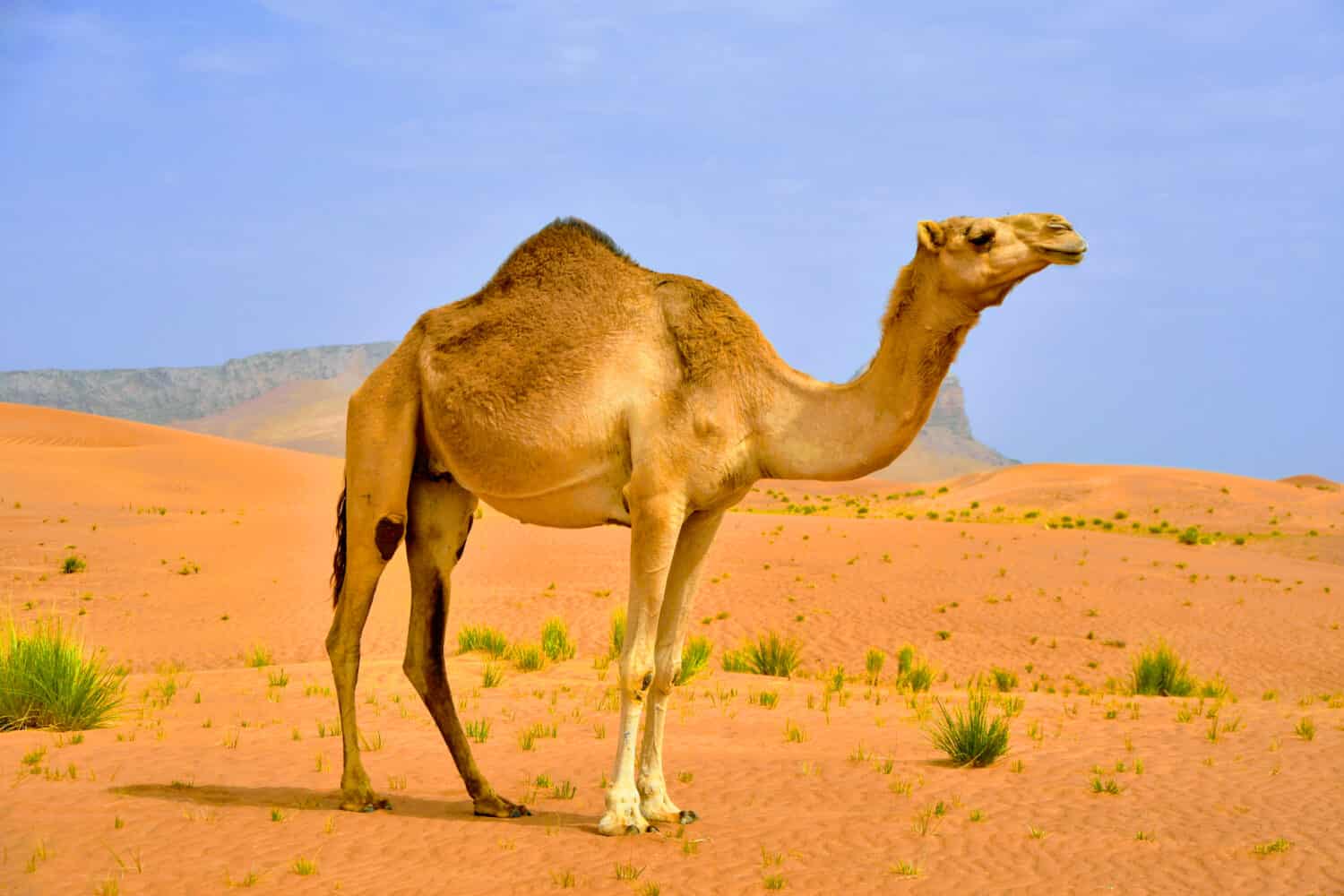
Dromedary camels have a single hump.
©Shengyong Li/Shutterstock.com
Fennec Fox (Vulpes zerda)
The fennec fox is a small fox species living in the Sahara Desert and North Africa. It has distinctive large ears. They evolved to ensure its enhanced hearing could better detect prey. Its build means it can better deal with high temperatures by dissipating heat. The fennec fox thrives in temperatures up to 104 degrees Fahrenheit. But the most remarkable feature is that it can go without water for extended periods by extracting moisture from its food.

The fennec fox adapated its body to best deal with the high heat in arid climates.
©hagit berkovich/Shutterstock.com
Gila Monster (Heloderma suspectum)
The Gila monster is a venomous lizard that resides in the deserts of the southwestern United States and northern Mexico. It has thick skin and a low metabolic rate, which help it endure temperatures exceeding 100 degrees Fahrenheit. One of the unique adaptations made by the Gila monster is the ability to reduce water loss by excreting concentrated urine.
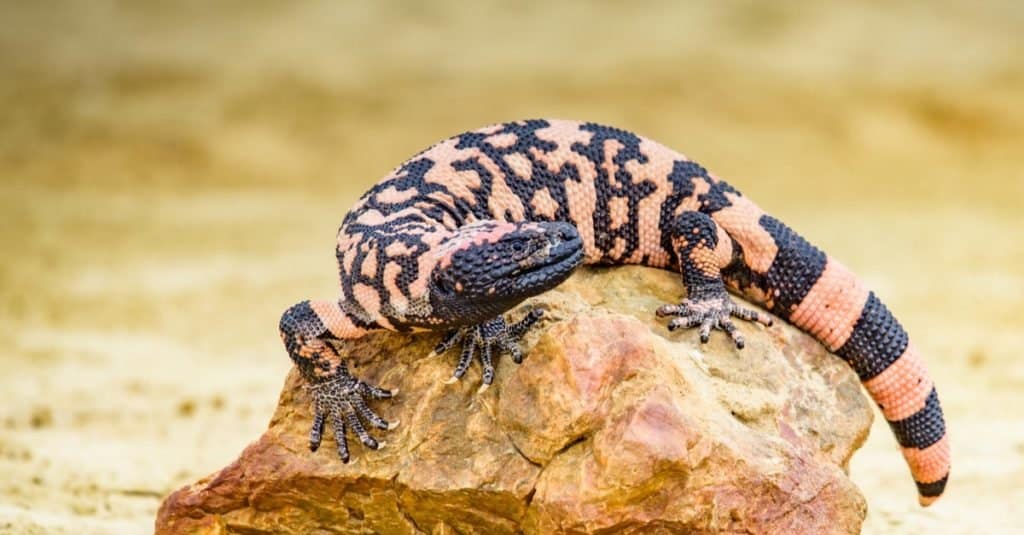
The Gila monster has thick skin and a low metabolic rate, which help it endure temperatures exceeding 100 degrees Fahrenheit.
©Vaclav Sebek/Shutterstock.com
Desert Tortoise (Gopherus agassizii)
The desert tortoise is a reptile adapted to arid environments, including the Mojave and Sonoran Deserts. With a hard shell that protects it from heat and predators, the desert tortoise spends most of its time in underground burrows to avoid extreme temperatures. It can withstand temperatures exceeding 100 degrees Fahrenheit and can conserve water through efficient kidneys. And to further protect itself from the heat, it remains inactive through much of the year.
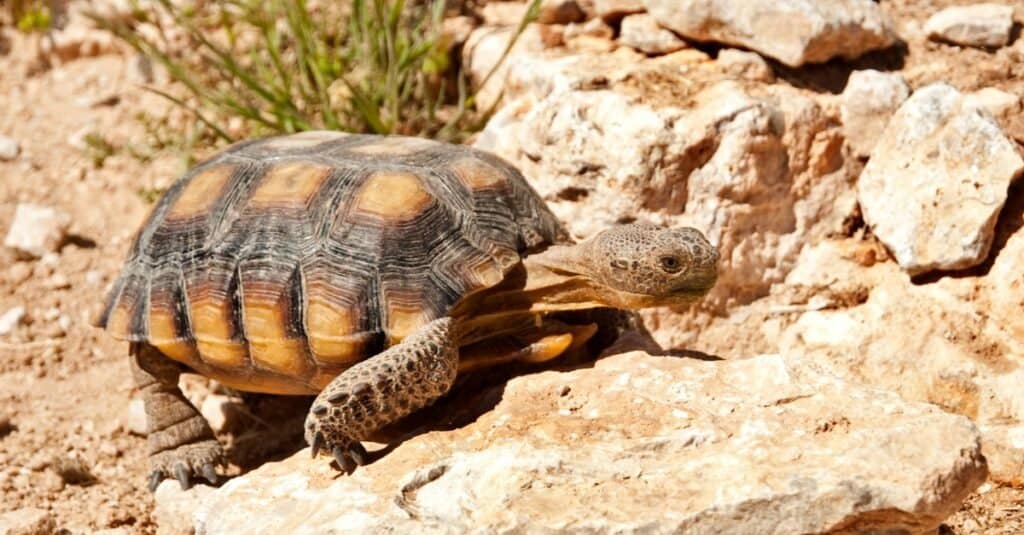
The desert
tortoise
is native to the Mojave and Sonoran Deserts.
©Darren J. Bradley/Shutterstock.com
Roadrunner (Geococcyx californianus)
If you watched Saturday morning cartoons, chances are you are at least familiar with the roadrunner. This bird species lives in the arid regions of North America, including California, Arizona, New Mexico, Texas, and Mexico. It has a lightweight body, long legs for efficient running, and can regulate its body temperature by panting. With a remarkable resistance to high temperatures, the roadrunner thrives in habitats with temperatures reaching 100 degrees Fahrenheit.

The roadrunner has a lightweight body, long legs for efficient running, and can regulate its body temperature by panting.
©iStock.com/Frank Fichtmüller
Long-eared Jerboa (Euchoreutes naso)
The long-eared jerboa is a small rodent known for its extraordinary adaptations to desert life. This tiny creature is found from northwest China to southern Mongolia. Other relatives live as far south as North Africa and the Arabian Peninsula. It has elongated hind legs that aid in hopping across hot sand. By limiting activity during the hottest parts of the day, the jerboa conserves energy and minimizes water loss. These amazing rodents can survive in temperatures exceeding 100 degrees Fahrenheit.
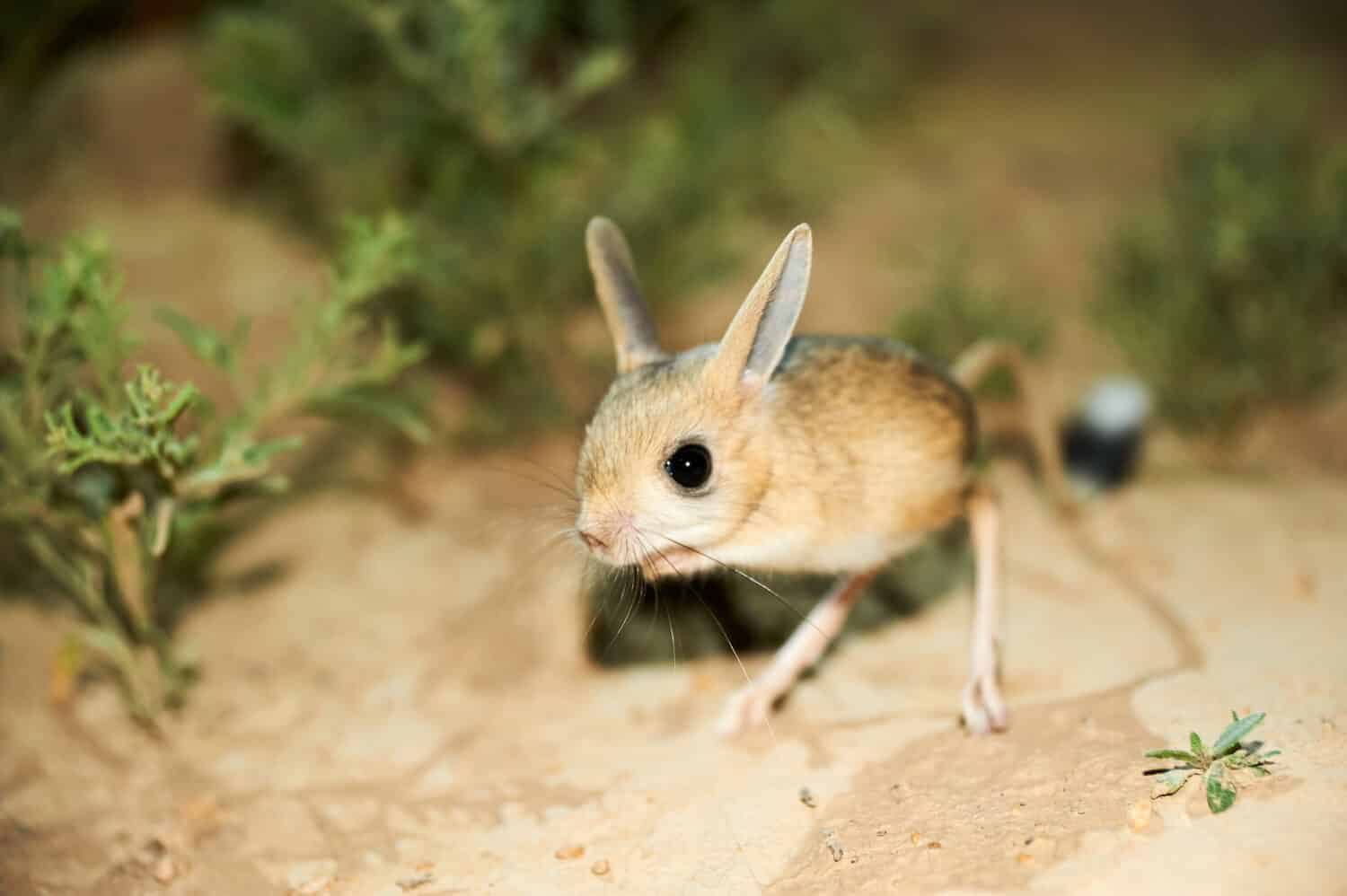
The long-eared jeroba has an incredible ability to minimize water loss.
©Yerbolat Shadrakhov/Shutterstock.com
Thorny Devil (Moloch horridus)
The thorny devil is a unique lizard found in the arid regions of Australia. Its spiky appearance acts as both camouflage and protection from predators. The thorny devil can drink water by absorbing it through its skin after dew collects overnight and in the early morning hours. Additionally, it can change its body color to reflect sunlight and reduce heat absorption. These adaptations help the thorny devil tolerate temperatures over 100 degrees Fahrenheit.
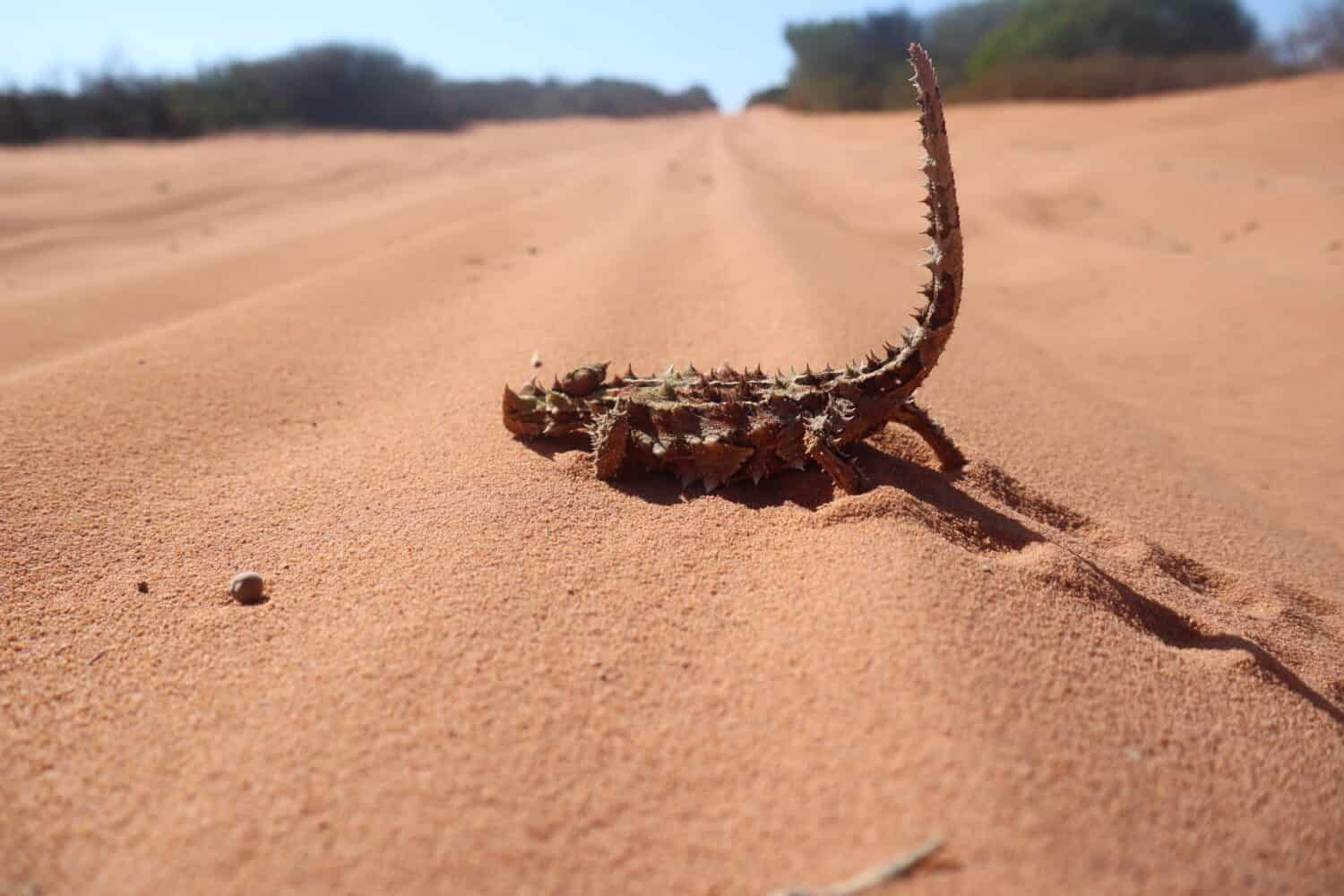
Thorny devils are perfectly adapted to the Australian desert.
©Droneymo’s Travels/Shutterstock.com
Kangaroo Rat (Dipodomys spp.)
The kangaroo rat is a small, nocturnal rodent that resides in arid regions of North America, particularly the southwest. It has an exceptional ability to conserve water and rarely needs to drink water. Instead, the kangaroo rat gets most of its moisture through food. This tiny creature thrives in environments in scorching hot environments. It also has the ability to quickly and easily detect predators before they arrive.

The
kangaroo
rat gets most of the moisture it needs from its diet.
©Dominic Gentilcore PhD/Shutterstock.com
Arabian Oryx (Oryx leucoryx)
The Arabian oryx is an antelope species that makes its home in the desert. It is commonly found in the Arabian Peninsula. Its pale coat reflects sunlight, which helps keep it cool. And the animal has learned to remain nearly perfectly still under the shade of nearby trees by day and eat at night. If it gets too hot or water becomes scarce, they can reduce their resting metabolic rate and urine output to help conserve moisture.
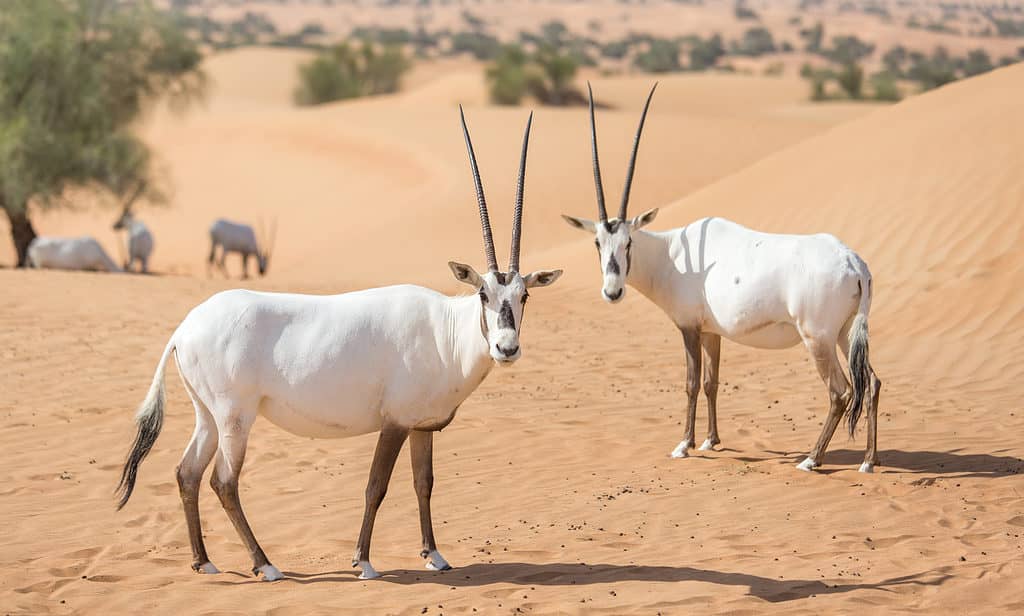
The Arabian oryx’s light colored coat helps deflect the harsh sun rays in arid climates.
©Kertu/Shutterstock.com
Deathstalker Scorpion (Leiurus quinquestriatus)
The deathstalker scorpion lives in desert regions such as North Africa and the Middle East. Its range even reaches as far as parts of India. This venomous creature is an arachnid and one of the most dangerous scorpion species. They can thrive in such hot climates because of behavioral adaptations. The deathstalker scorpion typically creates (or steals) burrows to escape the heat of the day. It also has developed an ability to conserve water and is nocturnal.
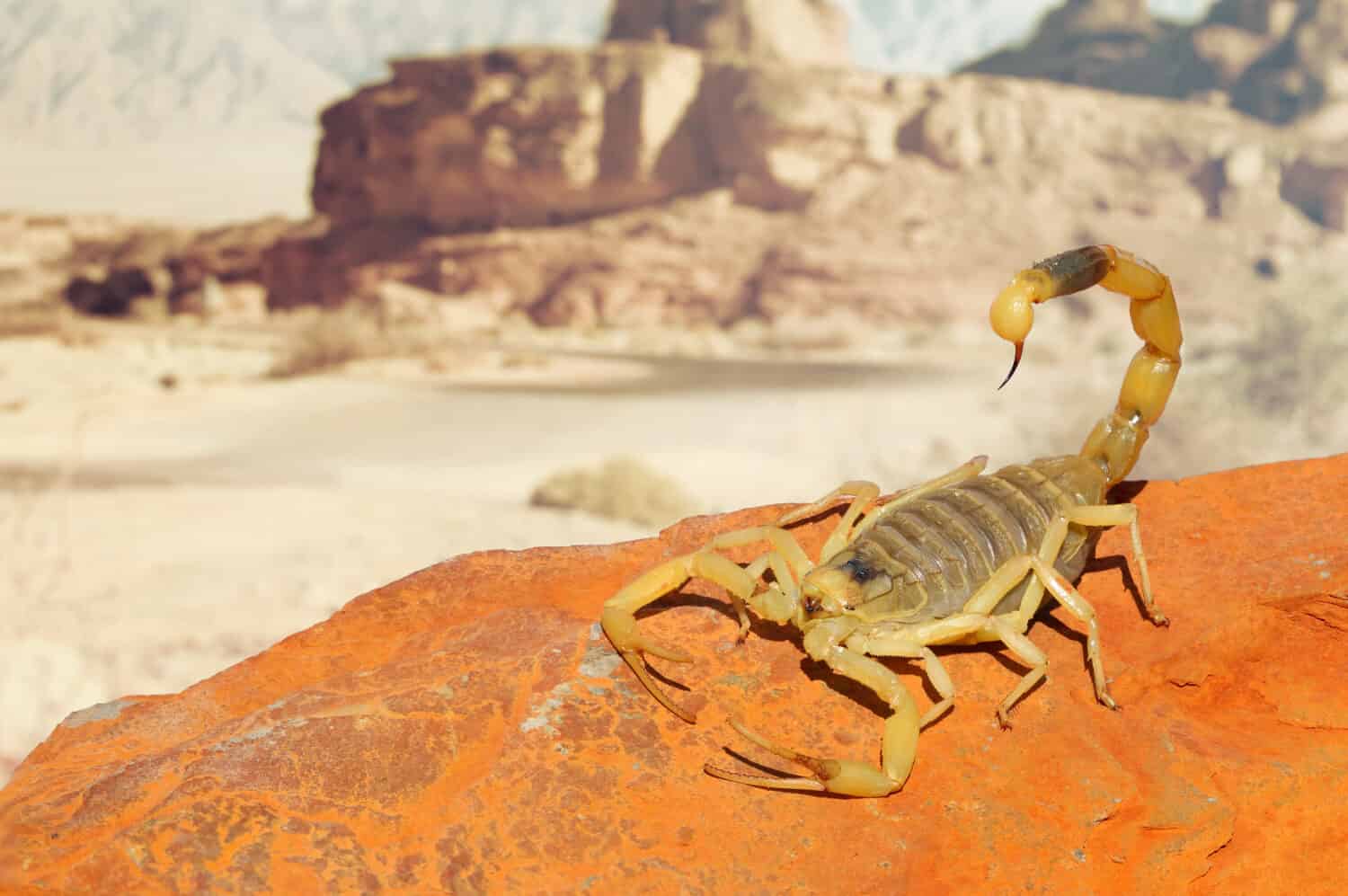
Deathstalker scorpions are particularly well adapated to hot climates.
©Protasov AN/Shutterstock.com
What Animals Live in Mississippi?
Since Mississippi does not normally experience the scorching heat of 100-degree temperatures found in arid regions, these amazing desert creatures don’t call the area home. But the state is home to its own set of diverse wildlife. These animals were even able to withstand the state’s hottest temperature recorded!
Mississippi has an incredible nine national wildlife refuges, twenty-five state parks, six national forests, and eight state wildlife management areas. That means there is ample opportunity to explore the natural world and encounter impressive animal species.
Some notable animals found in and in Mississippi include:
- White-tailed Deer (Odocoileus virginianus)
- Eastern Box Turtle (Terrapene carolina carolina)
- Northern Cardinal (Cardinalis cardinalis)
- American Bullfrog (Lithobates catesbeianus)
- Eastern Chipmunk (Tamias striatus)
- Eastern Cottontail Rabbit (Sylvilagus floridanus)
- Eastern Bluebird (Sialia sialis)
- North American Raccoon (Procyon lotor)
- Eastern Diamondback Rattlesnake (Crotalus adamanteus)
- American Black Bear (Ursus americanus)
- Nine-banded Armadillo (Dasypus novemcinctus)
- Little Blue Heron (Egretta caerulea)
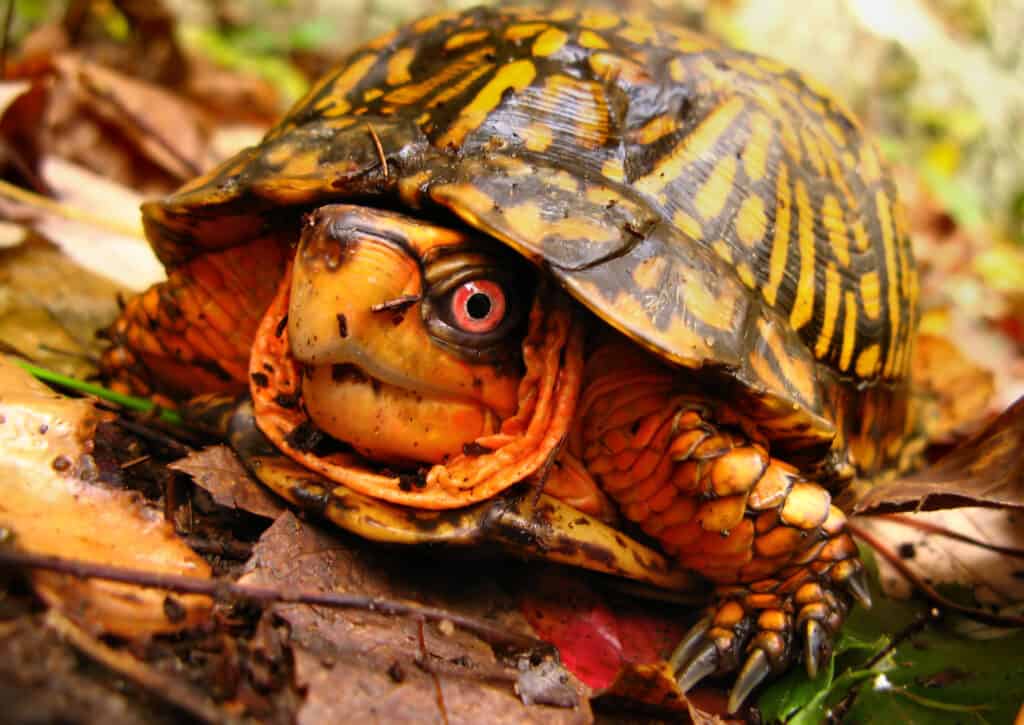
Eastern box turtles are terrestrial and love hanging out in the warmer Mississippi weather.
©outdoorsports44/Shutterstock.com
The photo featured at the top of this post is © lucianvenutian, CC BY-SA 2.0
Thank you for reading! Have some feedback for us? Contact the AZ Animals editorial team.







